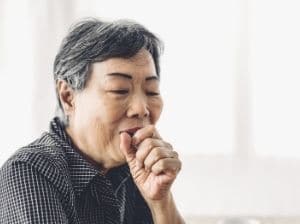
In the last months, more emphasis has been placed on senior respiratory health, and the battle is far from over. As we enter cold and flu season, there is a whole new host of enemies bent on attacking the respiratory health of our senior living facility residents. As directors and administrators, it’s our job to do what we can to keep the air in our facilities as clean as possible. Being aware of some of the major causes of poor indoor air quality can help in the fight to keep our residents healthy.
Harsh Cleaners
In our efforts to keep facilities as germ-free as possible, senior living facilities have taken on a more stringent cleaning routine. While this is important for resident safety, one should consider the impact many cleaners have on indoor air quality. Cleaners that include ammonia, bleach, or volatile organic compounds (or VOCs) such as furniture polish, air freshener, dishwashing soap, and glass cleaners can exasperate previous breathing issues such as asthma and can lead to the development of new chronic breathing issues.
When choosing cleaners for your facility, review the ingredients list, and consider buying more natural-based cleaners.
Renovations
The building itself may be contributing to breathing issues, and many times these issues are exasperated by renovation projects in your facility. These are a few building projects that may cause poor indoor air quality.
Painting
Paints are a huge source of VOCs in buildings. This is true not only while paint is being applied, but even more so when the paint is drying. In fact, more VOCs are put in the air after painting is done. To reduce VOCs, follow best practices for indoor painting. Keep areas being painted well-ventilated for several days following painting or consider buying low or no-VOC paints.
Carpets
Carpet tends to hold more dust, allergens, and mold than other types of flooring if not regularly vacuumed. Even with regular vacuuming, most carpets are made with harsh chemicals that will end up in the air from the time that the carpet is installed. Consider using other flooring options, such as hard flooring, then add rugs that can be taken out of the space and cleaned. If carpet is being installed, make sure that the area is well ventilated.
Insulation
Many older insulation materials have now been declared dangerous. Even ones that aren’t dangerous in themselves can become dangerous as they get older. If yours is an older building, see if you have any of the following types of insulation before doing renovation work that may require breaking into walls:
- Horsehair
- Asbestos
- Urea Formaldehyde Foam
- Vermiculite
- Fiberglass (loose or batt)
Mold
Mold is common in any indoor facility and can aggravate allergies and respiratory health. It thrives in humid, dark areas such as under sinks, in basements, and in bathrooms. Check these areas periodically for mold. Even if you don’t see mold, if residents have sudden, unexplained breathing issues, there may be a hidden infestation.